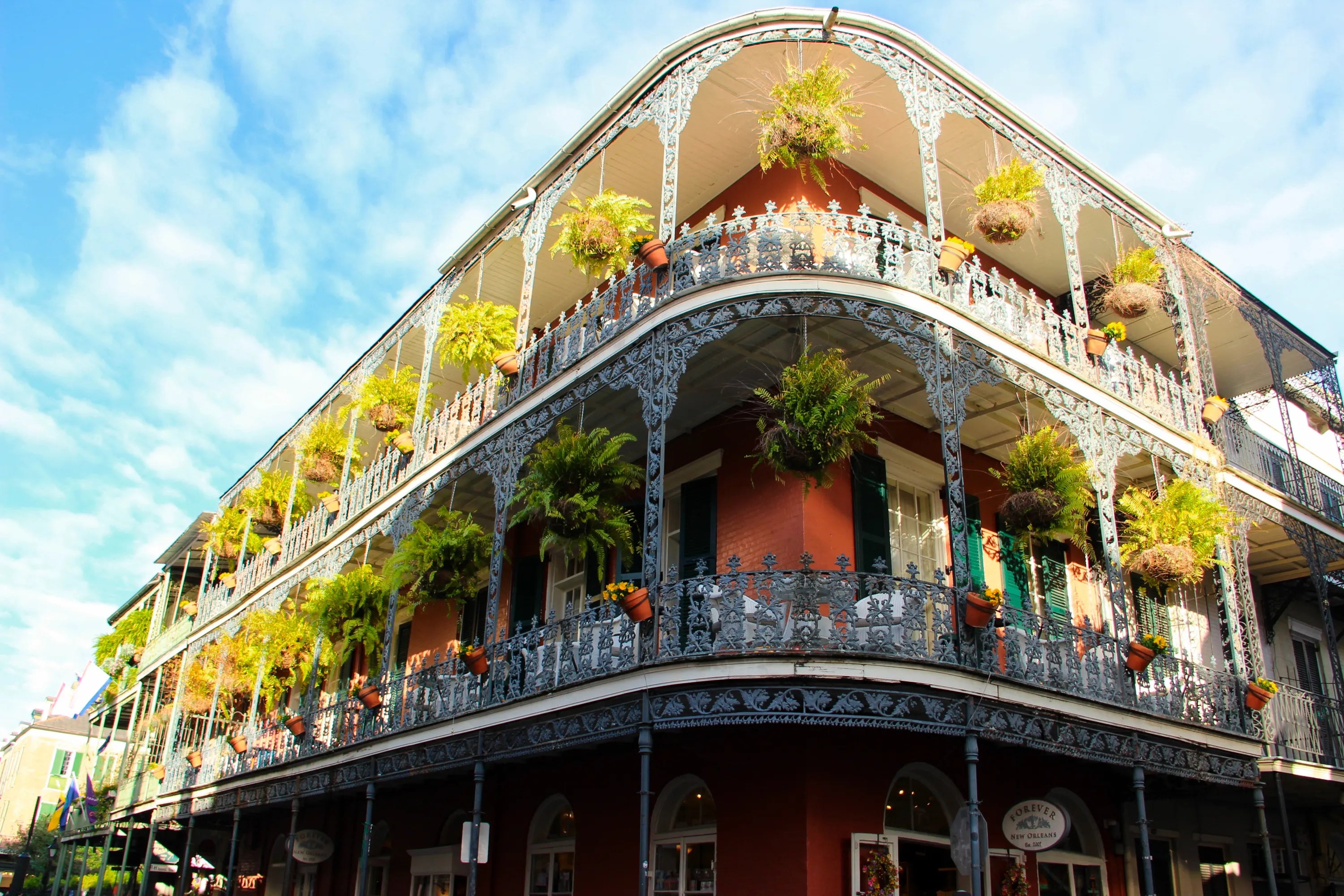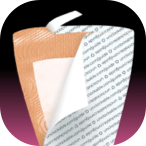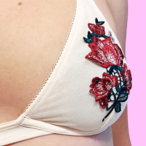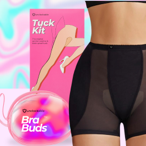
Flying while Transgender or Non-binary? Here are 9 Travel Tips for How to Go Through the TSA Security Checkpoint Hassle-Free. (Updated for 2023)
Flying while Transgender or Non-binary? Here are 9 Travel Tips for How to Go Through the TSA Security Checkpoint Hassle-Free. (Updated for 2023)
Are you like I was? Excited to travel, but worried and not sure what to expect at the airport? As transgender women and gender non-conforming folx, we’re all too aware of the anxiety that can arise as you enter an airport.
This guide is full of things I wish I knew years ago. These simple, proven tips are the culmination of hours of research, customer feedback, and stories from community members and activists. Let’s dive right into some proven ways to make the air travel experience a little easier...
The 9 Ways To Make Trans Air Travel Less Stressful:
- Be prepared: know your rights as a traveler and how to communicate with the TSA
- Consider signing up for TSA Pre-Check
- Allow extra time to go through the TSA security check
- Make sure your airline reservation matches your ID card
- Pack medical supplies within reach in your carry-on in a resealable plastic bag
- Carry documentation for your prescriptions
- Complete and bring a discreet notification card
- Know what to expect from body scanners
- Be prepared for a pat-down
- (BONUS!) The Importance of Planning Your Destination + 3 Trans-friendly Travel Destinations
Quick Note: The Unclockable Tuck Kit is not expressly TSA-approved, nor has it been reviewed by the TSA for approval. The information on this website is not legal advice. You can find our full disclaimer statement here.
#1: Be prepared: know your rights as a traveler and how to communicate with the TSA
First, take a deep sigh of relief: Most of the time, trans people are able to proceed through security without incident.
In fact, The Federal Aviation Act prohibits such discrimination by airlines against passengers. That said, it’s always best to be cautious and to know your rights when traveling.
As a general rule, assume you’ll be required to undergo additional screening. This may not happen, but planning ahead for this "worst-case scenario" can reduce stress in the event that something does go wrong.
This section helps answer some of the most frequently asked questions trans people may have about airport security. It provides steps you can take to prevent issues and how to address problems if they arise.
Here are some pointers for Trans folks communicating with TSA agents:
-
Keep Calm, Polite, & Respectful: Trans passengers have the right to be treated with respect, dignity, and discretion. The TSA has to respect your rights. In turn, it’s best for you to assert your rights in a positive and respectful manner. We strongly encourage you not to get in a confrontation with TSA personnel. Things could escalate quickly, and acting aggressively can result in serious consequences, and even criminal charges. This doesn't mean that you can’t assert your rights—just that you should do so in as calm and polite a manner as possible. If you have any problems, calmly request to talk with a supervisor right away.
-
Assert Your Right to Privacy: You may request a private screening or speak with a supervisor at any time during the security screening process. If you do move to a private screening area, know that you’re entitled to bring your choice of a witness, be they a friend or travel companion. If an issue arises, state it calmly and request that TSA personnel take appropriate action. If TSA agents are unaware of your rights, you can point to signs with general information such as the right to refuse entry into a full-body scanner, which are often posted throughout the airport security area. If that’s not enough, you can direct them to the Trans Passengers page on the TSA website, which outlines their commitment to treating Transgender people with “respect and courtesy." We’ve also created a PDF of this page that you can download here.
- Stay Calm If Approached: You might be approached while in the terminal, even if you’re past the checkpoint. TSA officers are stationed all around the airport, and some of these roving agents are known as Behavioral Detection Officers (BDOs). These agents walk around looking for various behaviors consistent with those who are trying to conceal criminal activity. If these officers approach you, they may ask questions about your destination and luggage. It is natural to feel anxious if you encounter these officers. Unfortunately, from the perspective of the agent, sometimes such anxiety can make a traveler appear suspicious. When asked questions by BDO agents, give simple answers. Because of the potential for encounters like these to “out” trans people in unsafe ways, remember that it may help to openly share that you’re aware that you might appear anxious or suspicious. If you are a person who is being treated for anxiety, you can opt to discreetly share your condition by presenting a Discreet Notification Card (below), which can be printed at home or carried in a photo on your phone. Always remember that you can ask to speak to a supervisor if you encounter any difficulties.
How to Communicate Discreetly with the TSA
For the purpose of communicating clearly and getting back on your way as fast as possible, consider using a pre-printed Discreet Notification Card to disclose specific personal information like medical conditions, or other considerations quietly with TSA personnel.
Call ahead: If you have specific questions about screening policies, procedures, or what to expect at a checkpoint before a flight, call the TSA Cares helpline at (855) 787-2227. You may request the help of a passenger support specialist, who will assist you when you arrive at the airport.
#2: Consider TSA Pre-Check
The TSA Pre-Check™️ program offers what's known as "expedited screening.” This program gets registered travelers through security quicker, and with less hassle.
Although the program does not guarantee that body scans or pat-downs can be avoided, participants usually walk through a metal sensor instead of a body scanner and experience pat-downs less often. Conveniences like leaving your shoes and belt on are also a plus.
Eligible passengers can register directly with TSA Pre-Check by completing an online application and paying a fee. That fee is $85 at time of writing. Please note that during the approval process, you may need to disclose prior names, and/or your dead-name.
Registering with Pre-Check can be something of a hassle in itself— still, this option may be worth considering if you travel frequently.
#3: Give Yourself Extra Time
Airlines, run mostly by cis folks living inside the binary (#noshade) are often optimistic about the time it takes to get through the airport and onto your flight. For domestic travel, most airlines say that if you're not checking luggage, you want to arrive at the airport 60 minutes before takeoff. If you're checking luggage, they say to arrive with 90 minutes to spare. For international flights, they say you should give yourself two hours. But here's the thing: the TSA actually disagrees with a lot of this. So, what do they recommend?
Your “3-2-1” approach to stressing less in the airport:
- 3 hours before your flight: Arrive at the airport ticket counter to check in
- 2 hours before your flight: Be in line at the airport security checkpoint
- 1 hour before your flight: Be at the gate. (Watch some Netflix or listen to an audiobook if you get bored!)
This may seem like a lot of extra caution, but when you arrive at the gate with enough time to grab snacks and a coffee, you’ll feel like master of the universe.
#4: Make sure your airline reservation matches your ID card
First, I want to acknowledge that not all of us have our documents changed to reflect our gender. I know this can cause a lot of stress, but we’re going to share how to minimize this as much as possible.
Now, I know what you’re thinking…
What If My ID Is Different From My Gender Presentation?
According to Transequality.org:
“All passengers 18 years of age or older are required to provide proof of identity at check-in and at the security checkpoint.
Booking your Flight: TSA rules require that you provide your name, gender, and date of birth when making an airline reservation. The Secure Flight program checks the reservation information against government watch lists. The gender information included in your reservation is used to eliminate false matches with the same or similar names – not to evaluate a person’s gender. To avoid hassles, the name and date of birth included in your reservation should match the government-issued photo ID you will provide at the airport. If your tickets are being booked by someone else, you should make sure that the person booking your tickets uses the information on the government-issued ID you plan to use at the airport.
Going through ID Checkpoint: At the airport, TSA Travel Document Checkers will check as you enter security to ensure that the name on your ID matches your boarding pass. It does not matter whether your current gender presentation matches the gender marker on your ID or your presentation in your ID photo, and TSA officers should not comment on this.”
Bottom Line: when it comes to making reservations, be sure to book your flight with the same name, gender, and birthdate as the ID you plan to travel with.
The bad news: If your current ID has your dead-name on it, that’s the name you have to use when booking your flight.
The good news: It doesn't matter if your current gender presentation matches your gender marker from your ID, or the presentation in your photo!
#5: Pack medical supplies within reach in your carry-on in a resealable plastic bag
For easy access, pack medical items in a toiletry kit, resealable plastic bag, or a hard case. Medical items include medicines, hormones, and syringes. Keeping these items in a separate bag near the opening of your carry-on luggage makes them easier to inspect, and that means you’ll be on your way quicker! (It also ensures you’ll be able to reach them during the flight, if needed)
#6: Carry documentation for your prescriptions
If you travel with medicines or hormones in your carry-on, bring proof of prescription from a doctor. This could be in the form of a pharmacy reciept or a letter from your physician stating the items are medically necessary.
If you’re traveling with syringes, note that you’re required to declare them to TSA personnel at the airport checkpoint so they can be inspected. You can tell the TSA agents directly or use the Discreet Notification Card mentioned earlier.
It’s important to keep prescribed medicines and medical devices with the pharmacy labeling intact. Note: You may be asked to explain the purpose of these items. This is where a letter from your doctor does wonders. Most MDs don’t mind writing a few words, and presenting a letter means you get to avoid an awkward verbal exchange in a crowded airport.
#7: Complete and bring a discreet notification card
How much you disclose to the TSA is up to you. When traveling, I personally find discreet transparency to be the way to go. One option for quietly communicating with TSA personnel is to use a preprinted “Notification Card” to disclose a particular personal item, medical condition, or other information. This card can be printed at home or carried in a photo on your phone.

TSA agents are trained to recognize this card, and to take action to provide the appropriate screening procedures. Above is an example I’ve filled out. Yours can say as little or as much as you’re comfortable with.
Download the Notification Card template from the TSA website here
#8: Know what to expect from body scanners

Image credit: Trans Fusion, the blog of Dr. Cary Gabriel Costello, an intersex trans male professor at the University of Wisconsin-Milwaukee and and advocate for transgender and intersex rights.
Much has been written about the body scanners used at the checkpoint, and the ordeals and delays they’ve caused in the past. The software used in these systems has been revised several times since it’s introduction, but the options given to the operator of the machine are still binary: they require the agent to select from blue-for-boy or pink-for-girl scanning options.
The scanner looks for "anomalies" under the passenger's clothing that are "incongruent" with the operator's selection.
The image above shows what a TSA agent will see when many trans women go through a scanner: an "anomaly" in the groin area, which sets off an alarm.
Does Tucking Help Avoid The "Groin Anomaly" At The Scanner?
Tucking can help. Here's how Rose’s Tuck Kit made her return flight much less stressful:
Ethics statement: Rose traveled safely with Tuck Kit prior to working with Unclockable on this partnership basis. Her story is authentic and represents her actual experience in the airport. Rose’s follow-up video sharing her experience and featuring our Tuck Kit was a paid ad.
Why might tucking help a trans woman avoid the groin anomaly issue? Well, the machine is looking for something down there . . .
When tucked, a trans woman's physiology —in this case the contours of her groin— will better match the pattern for "female". When we say pattern, we mean it will match what the programmer at the TSA encoded into the scanner software, where clearly there was a choice made that defined "female" as a person without a penis. This binary software choice effectively erases trans, intersex, and gender non-conforming people, but that's a topic for another post.
For the real nerds, here's more on the TSA's "Advanced Imaging Technology"
"(AIT) is TSA’s term for devices it uses to scan the contours of the human body to look for things under a person’s clothing that might be dangerous items. All TSA scanners are now equipped with software called Automatic Target Recognition (ATR). ATR analyzes the scan image of the body and displays an outline of a generic person with the location of anything the software identifies as an “anomaly” or "alarm" that TSA agents need to look at more closely. With ATR, according to the TSA, images of a traveler’s actual body are never viewed by humans.
TSA will not disclose details of how ATR detects anomalies, however in some cases, ATR software can register body contours not typical for a person’s gender as anomalies. Foreign objects such as prosthetics, binding garments, or even paper or change left in a pocket will commonly register as anomalies requiring further screening. Often this consists of a limited pat-down of the area(s) where an anomaly was detected, however it can potentially involve a complete pat-down."
You may opt out of AIT scans at any time, but if you do opt out of AIT screening, you will be required to undergo a thorough pat-down.
Source: transequality.org
#9: Be prepared for a pat-down
If the scanner sets off an alarm, you may be asked to step aside for a pat-down. Remember: Per TSA rules, you are able to request to any pat-down conducted in private, and you are legally allowed to bring a companion along.
You can’t be asked to remove your gender-affirming prosthetics or garments. According to the TSA website, trans travelers should never be asked to lift, remove, or raise an article of clothing to reveal or remove a prosthetic item. Ask to speak to a supervisor if a TSA officer asks you to reveal a prosthetic item.
Wearing a wig? If TSA personnel want to do a screening of your wig or hairpiece, you may request that a pat-down be limited to your hairpiece or that you be permitted to pat the area down yourself.
#10: (Bonus!) Plan Your Trip Carefully
Trans woman & YouTube star Gigi Gorgeous (video below) made headlines when she was detained at an airport in Dubai in 2016 for two hours and denied entry to the UAE (United Arab Emirates) for being Transgender. That’s right. In Dubai, trans folx are literally unwelcome. Critics of Gigi are quick to comment that it is “common knowledge” that LGBTQIA+ people in the UAE face legal challenges not experienced by non-LGBT people. In fact, according to Wikipedia, ”all sexual relations outside of heterosexual marriage are criminalized in the UAE.” Suffice it to say that Dubai is definitely not a trans-friendly destination, and clearly, planning ahead can help you avoid a situation like the one Gigi faced.
Where to Go: 3 Trans Friendly Travel Destinations

New Orleans, Louisiana
NOLA makes this list because it hosts a number of gay and trans-friendly events throughout the year. This city has a uniquely diverse history: Freed slaves, French, Caribbean, and Spanish immigrants have made NOLA a melting pot that’s less a Southern metropolis than a town wholly its own, inclusive of all. For a more bookish experience, check out the Saints and Sinners literary festival that takes place every year in May.

Dublin, Ireland
Dublin is the LGBTQIA+ capital of Ireland. The Irish celebrated marriage equality in late 2015, thanks in part to the work of Rory O’Neill, who fiercely rallied supporters as her drag alter ego, Panti Bliss. Here’s an LGBTQIA+ travel guide to Dublin.

Sydney, Australia
Sydney is home to one of the world's greatest—if not the world's best—Pride festivities, the Sydney Gay and Lesbian Mardi Gras, which takes place annually in February.
Enjoy your flight 🛫
Have a question or a story to share? Or even a travel tip that we didn't mention here? Let us know in the comments below!
Further Reading:
What Can I Do About Discrimination at the Airport?
If you experience discrimination at the airport, here's what you can do. From Transequality.org:
- You have the right to file a complaint. Both the TSA and the Department of Homeland Security (DHS) have separate civil rights offices that accept complaints of discriminatory treatment by TSA. You may file a complaint with either office or with both.
- Information and an optional form for filing complaints with the DHS Office for Civil Rights and Civil Liberties can be found here: http://www.dhs.gov/file-civil-rights-complaint. Fill it out and email it to CRCLCompliance@hq.dhs.gov, or, if you cannot save the form, email the same information it asks for to that address.
- Information and an optional form for filing complaints with the TSA Office for Civil Rights and Liberty can be found here: http://www.tsa.gov/contact-center/form/civil_rights_liberties. You can submit a complaint by sending the form or an email containing the same information to TSAExternalCompliance@dhs.gov.
- We encourage you to file complaints immediately after the incident, or as soon as you are able, and provide as many details as possible. You should include the airport, date, time, and as much information about the incident and people involved as possible.
- Also consider sending a copy of your complaint to NCTE@transequality.org to help us better understand the problems facing trans travelers and advocate for improvements.
- You can @AskTSA on Facebook or Twitter, however we do not recommend this as a substitute for filing a formal complaint.
- You may also contact TSA prior to travel through “Talk to TSA” or the TSA Contact Center at 1-866-289- 9673 and TSA-ContactCenter@dhs.gov.
Here are some Tips / Suggestions on what to say: - I experienced an AIT alarm in the [groin/chest] area that was apparently caused by my being transgender.
- I experienced an AIT alarm in the [groin/chest] area that was apparently caused by my being transgender and wearing a chest binder.
- I can imagine no other reason for this alarm to have occured./There was no foreign object there, just my own body.
- Describe the pat down and/or other additional screening you received as a result and how it made you feel.
- While the officers were polite and appeared to be just following procedure, this experience caused by TSA's scanners was not acceptable.
- [If applicable:] This is not the first time this has happened to me./This happens to me regularly.
TSA & Department of Homeland Security Links
Additional Reading:
TSA Transgender Passengers page:
https://www.tsa.gov/transgender-passengers
TSA Security Screening overview:
https://www.tsa.gov/travel/security-screening
TSA 3-1-1 Liquid Guidelines:
http://www.tsa.gov/travel/security-screening/liquids-rule
TSA Traveler Notification Card:
http://www.tsa.gov/sites/default/files/disability_notification_card_508.pdf
TSA Traveling with Children Overview:
https://www.tsa.gov/travel/special-procedures/traveling-children
TSA Pre-Check Overview:
http://www.tsa.gov/precheck/
TSA Contact Information for Advance Travel Questions:
- TSA Cares Hotline (for medical questions): 1-855-787-2227
- TSA Contact Center: 1-866-289-9673 and TSA-ContactCenter@dhs.gov
- “Talk to TSA” webform: https://www.tsa.gov/contact-center/form/information
DHS Civil Rights Complaint Information:
http://www.dhs.gov/file-civil-rights-complaint
TSA Civil Rights Complaint information:
http://www.tsa.gov/contact-center/form/civil_rights_liberties
Sources for this blog post
Sources:https://transequality.org/know-your-rights/airport-security
https://www.propublica.org/article/tsa-transgender-travelers-scanners-invasive-searches-often-wait-on-the-other-side
https://www.nytimes.com/2019/04/17/opinion/tsa-transgender.html
https://www.allure.com/story/travel-tips-transgender-nonbinary-people-airports
https://metro.co.uk/2015/09/23/transgender-woman-held-in-airport-after-penis-flagged-up-as-an-anomaly-on-full-body-scanner-5403674/
https://www.upworthy.com/transgender-tsa-screening-explanation
https://www.dailydot.com/irl/rose-montoya-trans-tiktoker-tsa-video/
https://trans-fusion.blogspot.com/2012/03/tsa-body-scanning-and-trans-body.html
https://trans-fusion.blogspot.com/2016/01/traveling-while-trans-false-promise-of.html
https://www.newsweek.com/tiktoker-calls-tsa-transphobic-after-sharing-horrible-airport-experience-1577805
https://www.buzzfeed.com/kristatorres/trans-woman-tsa-tiktok
https://www.instagram.com/tv/CMtI-GCneN_/?utm_source=ig_web_copy_link
https://www.tiktok.com/@rosalynnemontoya/video/6941510435594194181?referer_url=https%3A%2F%2Fwww.dailydot.com%2F&referer_video_id=6941510435594194181&refer=embed
https://www.tiktok.com/@rosalynnemontoya/video/6943394021788093702?lang=en












fiona mayfair on
I work for a major US airline and one of only a few transgender personnel but also act as a liaison between the company and the community.
Something that I helped develop for persons who have to use a legal name which may be different than their appearance is to call customer care or see a gate agent and ask for an other special service request for a preferred name to be used.
While your legal name will still be printed and will most likely be paged, the flight attendants and other personnel who have access to those special service requests will see them.
It’s not perfect, but it’s something .
Odette on